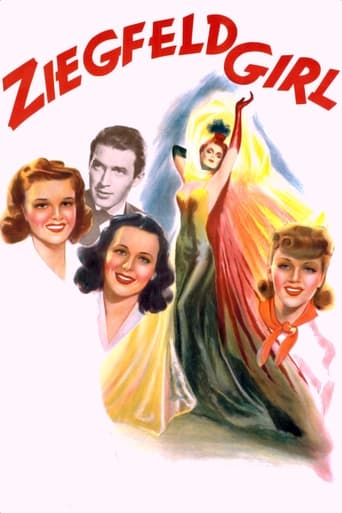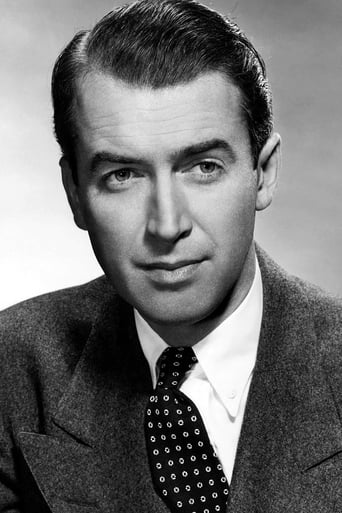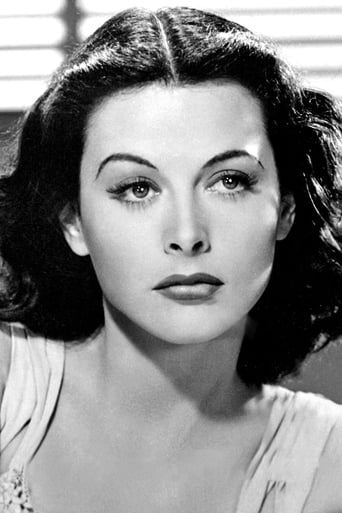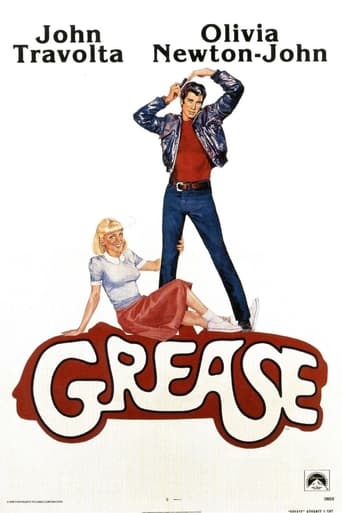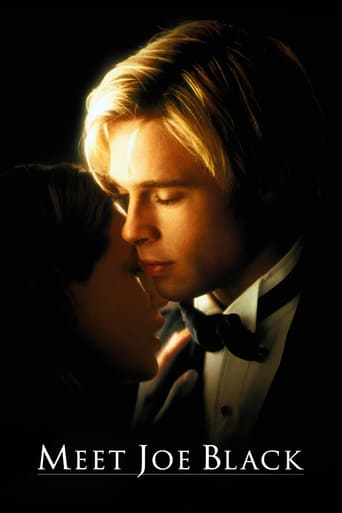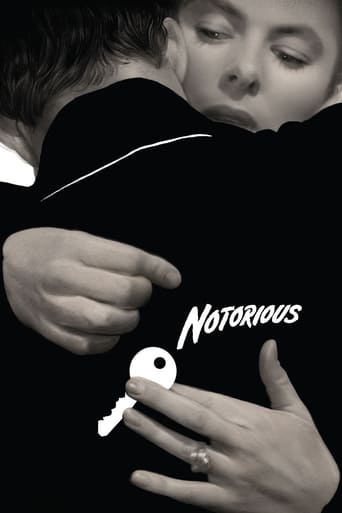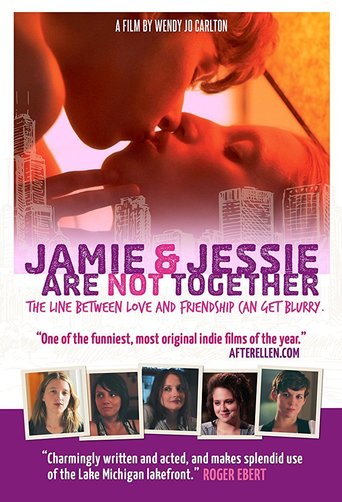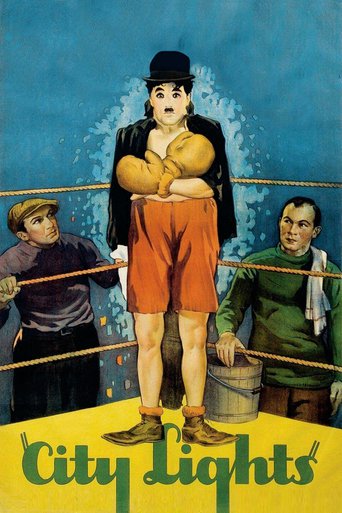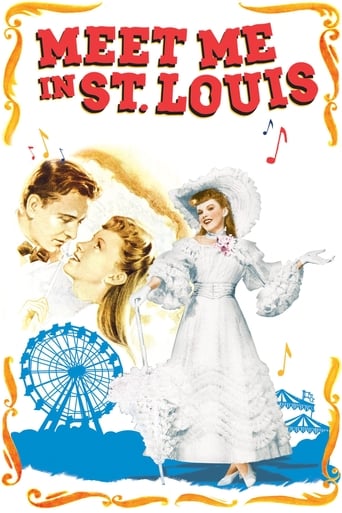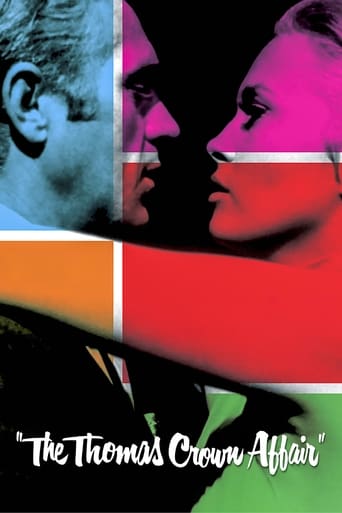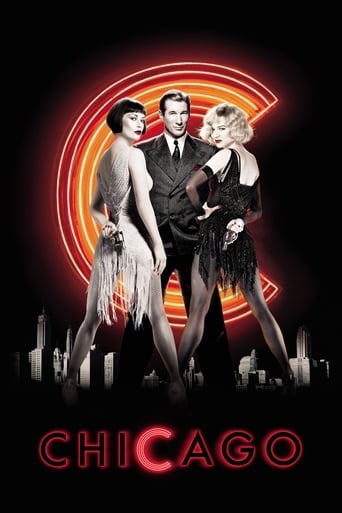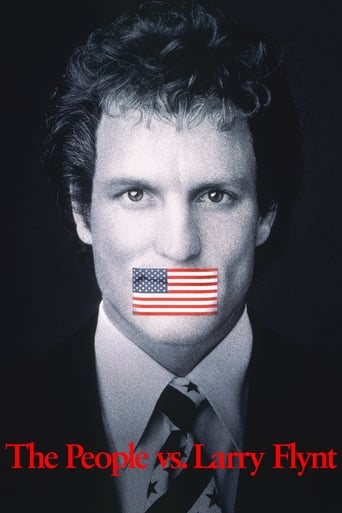Ziegfeld Girl (1941)
Discovery by Flo Ziegfeld changes a girl's life but not necessarily for the better, as three beautiful women find out when they join the spectacle on Broadway: Susan, the singer who must leave behind her ageing vaudevillian father; vulnerable Sheila, the working girl pursued both by a millionaire and by her loyal boyfriend from Flatbush; and the mysterious European beauty Sandra, whose concert violinist husband cannot endure the thought of their escaping from poverty by promenading her glamor in skimpy costumes.
Watch Trailer
Cast


Similar titles
Reviews
I don't have all the words right now but this film is a work of art.
Unshakable, witty and deeply felt, the film will be paying emotional dividends for a long, long time.
Story: It's very simple but honestly that is fine.
All of these films share one commonality, that being a kind of emotional center that humanizes a cast of monsters.
Ziegfeld Girl is comparable to Stage Door, so if you liked one, go ahead and rent the other. Both stories follow a handful of girls who want to make it on the stage and show how they deal with the ups and downs of show business. In this 1941 film, Judy Garland, Lana Turner, and Hedy Lamarr are the three hopefuls, each with their own unique personalities and perspectives. With a huge supporting cast, James Stewart, Jackie Cooper, Tony Martin, Charles Winninger, Edward Everett Horton, Eve Arden, Fay Holden, and Dan Dailey, you're in for a treat if you like star-studded backstage musicals. Movies like Ziegfeld Follies, Words and Music, and Till the Clouds Roll By all cater to that genre, and while it is fun to see a bunch of famous people for five minutes in the same movie, usually the script and story falls a little thin. This one isn't the worst in the world-trust me, I've seen some doozies-so if you want to rent it, it won't hurt you.
Even though I am not a fan of this turkey, I decided to watch it again the other evening to see if it had improved.I remember so well, how disappointed and short-changed I had felt when I first saw this, about 50 years ago. Having seen and enjoyed THE GREAT ZIEGFELD, I was looking forward to seeing MGM provide some even more spectacular musical numbers for this supposed sequel.How wrong I was! I have never been impressed by the YOU STEPPED OUT OF A DREAM number, though I love Tony Martin's rendition of the song. He is referred to as a tenor by several people in this film, but he was actually a high baritone with a fabulous voice and was one of the great song stylists of the era.But Berkeley's staging of this number is so uninventive and the final, long-awaited pull-back, reveals one of the dullest sets ever built ( oh, that ugly staircase - come on MGM, surely you can do better than that?) it is a total let-down.On the plus side, Judy is bright and bursting with talent, Hedy looks her most divine and the supporting cast is full of old favourites (Eve Arden, Edward Everett Horton, Charles Winninger, Rose Hobart and a young but surprisingly good, Dan Dailey) with only the 20 year old Lana Turner totally out of her depth with the demanding role of a chorus girl sliding into alcoholism, prostitution and ruin.However, what really made me feel cheated 50 years ago - and still does today - was the cheapskate, cost-cutting rehash of the best musical numbers from the earlier THE GREAT ZIEGFELD (1936) standing in as the cut-price grand finale.When I first saw the film, I kept with it for over two hours because I felt sure MGM was surely saving the best until last, for an eye popping finale. I was not amused to then spot all the clips rehashed from the earlier film, to say nothing of the lame mix of new footage with Judy Garland dressed and bewigged to resemble Virginia Bruce, before dissolving to the original footage of the MELODY number, but with a new soundtrack using YOU STEPPED OUT OF A DREAM. Surely nobody was fooled back in 1941? As others have commented, maybe the money ran out or L B Mayer said that enough had been spent so corners must be cut. The other more likely explanation is that none of the production team - or Mr Berkeley - could come up with anything that could top the sheer amazing lavishness of the earlier "Pretty Girl is Like a Melody" number, so they resorted to this re-edited reprise instead.In fact, when one thinks about it, nobody else has ever come up with anything to top that incredible number, in the 80 years since it was filmed (at the then staggering cost of %250,000 - almost $5 million in today's money, for a number lasting just 15 minutes) So, what we get here are 132 minutes of soapy melodrama, a few good musical moments (mostly Judy's) and some over the top costumes. And by the way, I do not agree with other reviewers here that filming this in Technicolor would have improved matters.I doubt I shall ever sit through it all again.
I don't know if it was the gathering dusk outside, or the feeling of contentment that crept through me, or maybe the fact that I just couldn't move my butt out of the chair, but while I was watching "Ziegfeld Girl" I went into a trance. I became aware of it while Judy was doing that silly, delightful Caribbean number near the end. When she was lifted way up in the air by all those long bamboo poles brandished by hunky guys a "wow!" dropped from my lips. As much as I chuckled at the outlandishly tacky costumes in the musical sequences and the inherent Hollywood goofiness of it all I was totally captivated. The story - three young women (Judy Garland, Lana Turner, Hedy Lamarr) dream of making it big on Broadway. The musical numbers - Busby Berkeley extravaganzas. Nothing new or original here. Yet as the movie unfolds it becomes clear that this is no musical comedy, but a darker look at the forces that shape the lives of the three women, particularly Lana Turner's character. This is Turner's movie, and she is dazzling. I couldn't take my eyes off her. James Stewart's portrayal of her shunned boy friend, a punk who can't betray his heart no matter how hard he tries, is a pleasant surprise. Eve Arden is on hand doing her usual shtick as a hard-bitten showgirl displaying her bracelets like wearable trophies.Edward Everett Horton plays Noble Sage, a theatre man who has seen it all. His early prediction of the three paths open to showgirls has the eerie feeling of a seer looking into a crystal ball. Judy achieves success and the big time, Hedy gets the white picket fence, and Lana is doomed to self-destruct. Her slide into alcoholism is presented with astonishing detail and clarity. Her maid, subtly portrayed as a woman of questionable breeding, is her chief enabler. Lana Turner, young, beautiful and shiny, is touching as a woman who compromises everything but tenaciously holds onto the little flame that is her own true self. The movie becomes more dark and strange in the final sequence, which cross-cuts between Lana's last descent down the theatre's grand staircase and the extravagant dream-like number before a starry sky on-stage where hushed, dirge-like poetry bemoaning the final curtain call floats ominously outward. It has an unexpected touch of grand guignol, it's melodramatic to the hilt, and I loved it. Staircases, the movie's predominant motif and dramatic device, serve the story well. Whenever Lana Turner got on one I held my breath. "Ziegfeld Girl" has been criticized for not being in colour. I can't imagine it, and wouldn't want it, in anything other than its beautiful black-and-white tonalities.
I am a sucker for those all-star movies of classic Hollywood. Where the whole studio would appear in a single movie. A lot of times the talent is merely used to make a cameo appearance in the movie. I enjoy those appearances as well, but a movie that uses the talent effectively in great roles is really a gem of celluloid. One such movie that uses all of the stars in great roles is Ziegfeld Girl (1941).Set in the 1920s, the film tells the parallel stories of three women who become performers in the renowned Broadway show the Ziegfeld Follies. It was intended to be a 1938 sequel to the 1936 hit The Great Ziegfeld, and even recycled some footage from the earlier film - however the movie underwent many changes in its plot before it was released.The story here follows three young women who get into the Ziegfeld chorus line.Lana Turner is an elevator operator in a department store who is seen by the showman and hired by his right hand man (Edward Everett Horton). She is seeing a truck driver (Jimmy Stewart). Turner likes the more lucrative and glamorous lifestyle she is entering (especialy the relationship she picks up with wealthy Ian Hunter). Stewart gradually gets disgusted by the change in her, and turns to "easy, big money" of his own - working as a driver and lieutenant of a bootlegger.The second follows Hedy Lamarr, the wife of violinist Philip Dorn. Dorn has been struggling (with the help of friend Felix Bressart) to get into public notice as a great classical violinist. While accompanying him to an audition for a violinist at the New Amsterdam Theater, Lamarr is hired for the chorus. Dorn does not want his wife to be a possible sex object for lascivious males. When Hedy refuses to give up a good job, Dorn walks out on her (although he keeps an eye on her career and relationships, especially with the male singer star of the show Tony Martin).Finally we see Judy acting with her father Charles Winninger at a vaudeville theater in Harlem (this is about 1920 or so). He is "Pop" Gallagher, a tried-and-true old vaudeville comedian and song and dance man. Judy is hired also for the chorus (the one failure of the plot: Judy is still an adorable young woman like "Dorothy" in the Wizard Of Oz, but is outclassed by Turner and Lamarr or even fellow chorus girl Eve Arden as a statuesque looker), but we see her pushed onto Horton and show director Paul Kelly as a singer by Turner and Lamarr. But her singing is not how Winninger trained her, and he feels he has to let her go off on her own. Instead he meets an old friend, Al Shean (here playing himself), and they go off into the vaudeville hinterlands to perfect an act together.Judy Garland had the best numbers with the sentimental "I'm Always Chasing Rainbows" and the bouncy "Minnie From Trinidad", but Tony Martin nearly stole the show with his signature number "You Stepped Out Of A Dream". The story of the three Ziegfeld hopefuls was interesting and compelling. One of the girls gained fame being a Ziegfeld girl, one Ziegfeld girl decided that family was her best bet, and one Ziegfeld girl went down the wrong path to self-destruction. Everything about this movie I enjoyed, and it a shame that this film is not remembered more. Florence Ziegfeld sure could put on a show, and even a movie about him was no different...

